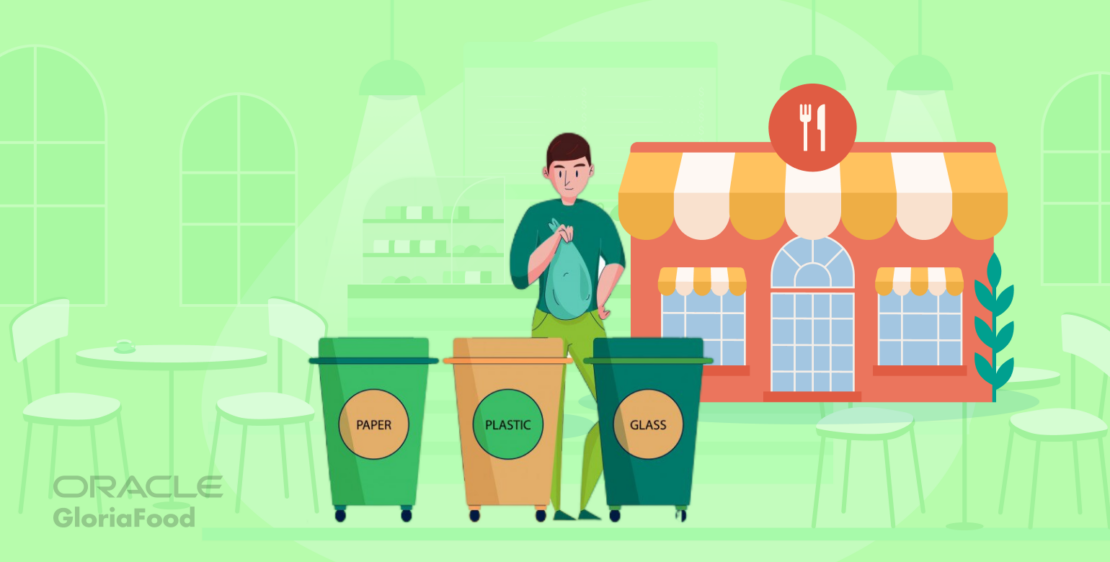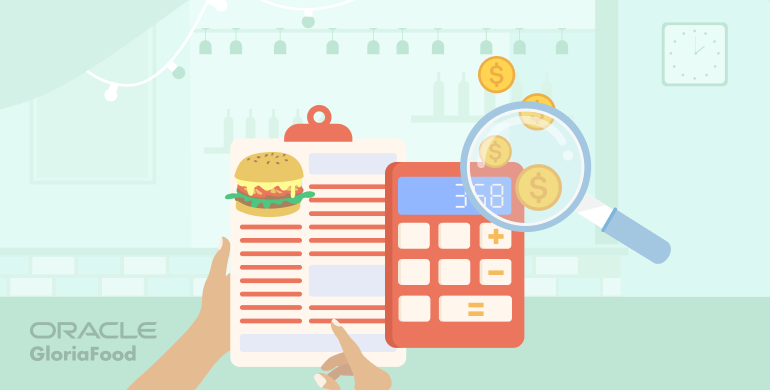- Why you must reduce restaurant waste
- Food waste in restaurant statistics
- How to Reduce Restaurant Waste: 11 Effective Tips
- 1. Use an inventory management system
- 2. Create standard operating procedures for storage
- 3. Make your menu smaller
- 4. Create customizable meal combos
- 5. Practice portion control
- 6. Cook with all parts of an ingredient
- 7. Offer customers the option to take leftovers home
- 8. Compost unusable food waste
- 9. Donate leftover food and ingredients
- 10. Buy products with less packaging
- 11. Recycle as much as possible
- Final Words
When you are running a restaurant, every penny counts. Do you know how much waste you are producing each month? And how much that is costing you? You should do a waste audit and see how much money you could save if you implement waste reduction measurements.
In this article, we will share easy tips on how to reduce restaurant waste so you can enjoy a successful business that is environmentally friendly.
Why you must reduce restaurant waste
While reducing restaurant waste is usually promoted because it can help the environment by not contributing to overfilled landfills, it has many benefits for restaurant owners as well:
- Make more money: if you use most of the ingredients you buy, you are earning money and not wasting them by throwing them out;
- Enjoy more efficient operations: by implementing measures to better oversee your inventory, you help your workers be more productive and efficient;
- Attract more customers: if you promote the zero-waste measures you are implementing at your business, environmentally conscious clients will be tempted to visit your restaurant.
Food waste in restaurant statistics
Producing a lot of food waste can really put a dent in a restaurant’s profit. That’s why it is important to find efficient ways to manage it. Check out these statistics:
- 10% of food is wasted before it even makes it onto the plate;
- 47% of customers are willing to pay more to support restaurants that reduce food waste;
- 6% of total sales in a restaurant are lost through food waste;
- 17% of the food served to restaurant diners is left uneaten;
- Poor food preparation leads to 45% of food waste.
How to Reduce Restaurant Waste: 11 Effective Tips
If you want to enjoy the benefits listed above, follow these tips:
1. Use an inventory management system
The main cause of restaurant food waste is overordering ingredients that don’t get to be used before they go bad. The solution is to use an inventory management system that will allow you to have a better view of your stock and alert you when you need to buy more.
You should also do your inventory more often, for example once a week than once a month. This way, you can see what your best-selling dishes are and what ingredients you should stock more often.
2. Create standard operating procedures for storage
When your employees have a lot of tasks to get through, they can easily lose sight of storing items correctly. This can lead to the ingredients either being forgotten about or going bad because they were left unrefrigerated.
How to reduce restaurant waste? You should create a series of restaurant standard operating procedures on how to properly store items and train your employees to follow them. Here is what you should cover:
- Always store food in closed containers so there is no risk of contamination;
- Label containers with the opening and expiry dates;
- Ingredients that expire sooner should be stored at the front for increased visibility.
A big menu implies buying a lot of ingredients that may never get used. It also makes clients think that you prize quantity over quality as how would you be able to prepare so many different dishes with fresh ingredients?
Try to limit your menu to 15 items and use the same ingredients for more of them. Furthermore, you should also shop seasonally because ingredients will be cheaper and fresher.
If you want to change your menu often, use our restaurant menu creator which allows you to make unlimited changes to the menu for free:
Create an attractive small menu that reduces food waste
Use our free intuitive restaurant menu maker
4. Create customizable meal combos
Offering meal combos is a great way to increase the average check value. But, if the combos are standard, a lot of the food may be left behind and you will have to throw it out. For example, some clients may prefer a salad, rather than fries as a side dish.
If you’re wondering how to reduce restaurant waste, offer customizable meal combos, where customers get to choose what goes in their combo. You can do so easily with the Promotions module from GloriaFood:
5. Practice portion control
Food waste doesn’t only occur in the kitchen, it also happens when customers get too much food and leave a lot of it on the plate. Except for compostable ingredients, most of the leftovers will go straight to the landfill.
If you want to avoid this, make the portion smaller. Or, better yet, offer different sizes for dishes so clients can choose the portion according to their appetite. Watch this video to learn how easy it is to add choices to your online restaurant menu:
6. Cook with all parts of an ingredient
If you want to know how to reduce restaurant waste, start finding more uses for a single ingredient. There are many resources out there that teach you about the nose-to-tail and root-to-flower trends that minimize waste.
For example, stems for aromatics could be used for stocks or sauces, and usually ignored parts of animals such as cow tongue can still be turned into delicious dishes like tacos.
7. Offer customers the option to take leftovers home
Just because clients couldn’t finish their dish in the restaurant, it doesn’t mean they don’t want to finish it. Some of them may be too shy to ask, so have the servers offer the option of a compostable takeaway container when they bring the check.
8. Compost unusable food waste
Even if you try to use most of your ingredients, some of them are just not edible. But they can still be turned into something useful if you add a compost bin at your restaurant. Print a flyer with what items can be thrown in it and teach your employees about it.
If you are wondering how to reduce restaurant waste and build relationships, you can ask your local suppliers if they would be interested in using your compost. This way, you can buy ingredients that were fertilized with your restaurant’s waste.
9. Donate leftover food and ingredients
Working at a restaurant can be unpredictable sometimes. You may have ordered your usual stock but because it was a holiday or the weather was very bad, you didn’t have a lot of clients and you are left with many ingredients or dishes that are about to go bad.
Don’t let them go to waste. Find local charities you can collaborate with and donate your excess to less fortunate people.
10. Buy products with less packaging
When we’re talking about how to reduce restaurant waste, we’re not focusing just on food waste. There is also a lot of trash coming from packaging. If you want to limit it, shop around for suppliers and find ones who are open to delivering your ingredients in a more eco-conscious way.
For example, wooden crates or reusable bags are a great alternative to unrecyclable plastic.
11. Recycle as much as possible
Don’t forget about the restaurant waste that could be recycled such as plastic, glass, or paper. Invest in separate collection bins for each type of recyclable waste, find a business that will collect it, and train your employees to dispose of each item properly.
Rely on technology to reduce restaurant waste
Install an online ordering system to your website for free
Final Words
Learning how to reduce restaurant waste is a must when most restaurant owners have trouble managing their food costs. It will not only save you money, but it can also help you get more people interested in your business.
- Why you must reduce restaurant waste
- Food waste in restaurant statistics
- How to Reduce Restaurant Waste: 11 Effective Tips
- 1. Use an inventory management system
- 2. Create standard operating procedures for storage
- 3. Make your menu smaller
- 4. Create customizable meal combos
- 5. Practice portion control
- 6. Cook with all parts of an ingredient
- 7. Offer customers the option to take leftovers home
- 8. Compost unusable food waste
- 9. Donate leftover food and ingredients
- 10. Buy products with less packaging
- 11. Recycle as much as possible
- Final Words








